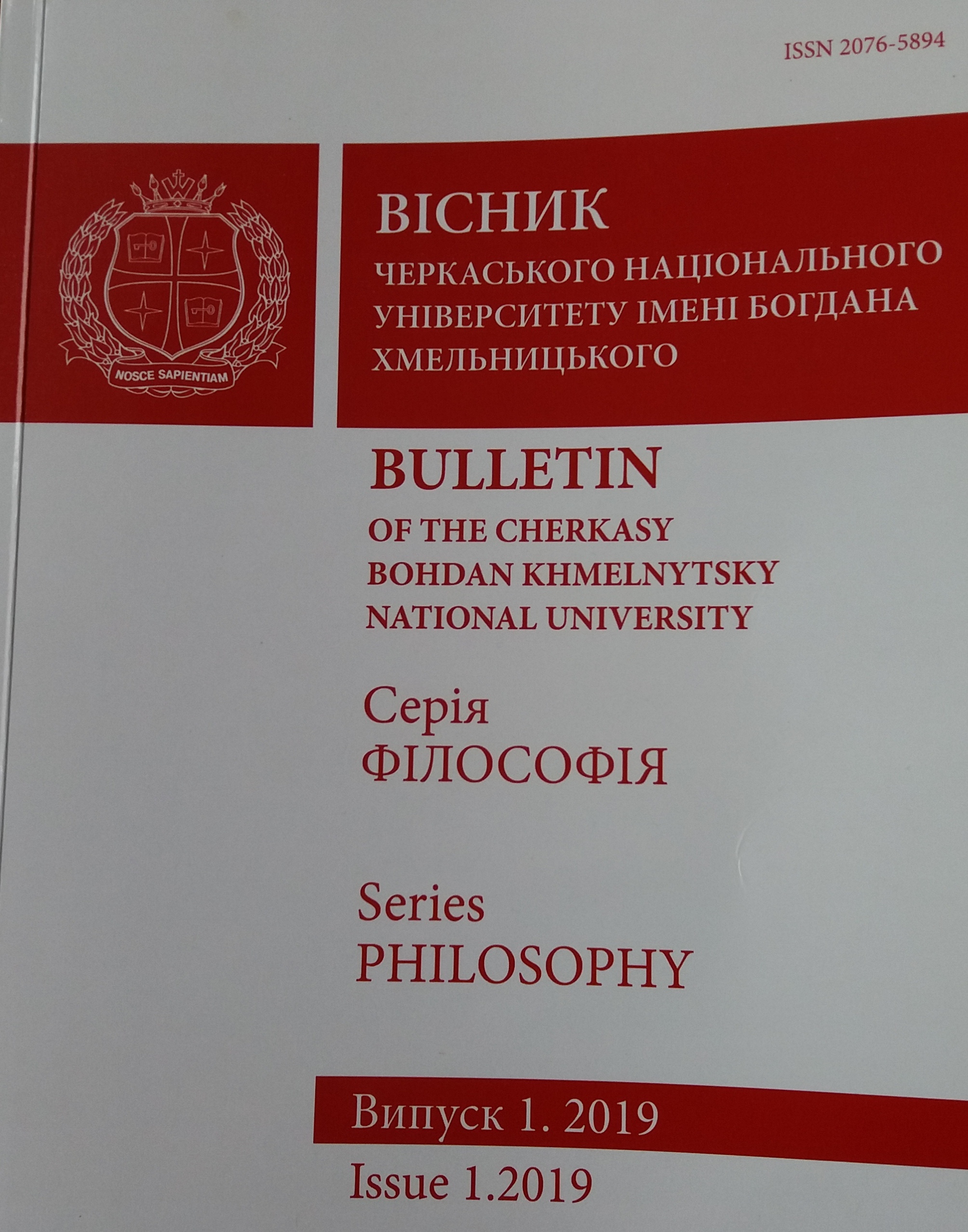THE CONCEPT OF THE WORLD PICTURE IN LATE WRITINGS OF LUDWIG WITTGENSTEIN AND MARTIN HEIDEGGER
Main Article Content
Abstract
Summary. Introduction. The article tackles the concept of the world picture in the late period of philosophizing of Ludwig Wittgenstein and Martin Heidegger. Interest in the following topic is determined by the search for the conceptual ground for contemporary sciences and the affirmation of the world picture as not just a way of representation of the facts of reality but a semantic sphere of meaning, sense-making that unifies representational and relational aspects of reality. It should be noted that the comparison of Wittgenstein’s and Heidegger’s views on the world picture can be valuable for a profound understanding of possible fundamentals of our knowledge. Researchers are still puzzled on how to systematize interdisciplinary knowledge, moreover, how to achieve the unity of representation of what we define as reality.
Purpose. The purpose of the article is to define major similarities and principal distinctions of interpretations of both thinkers regarding the concept of the world picture, to analyze the primordial approaches to the following conception, to emphasize the meaning of the world picture for the cognitive inquiry and its role in framing the system of knowledge.
Methods. To achieve the aim mentioned above we apply the methods of comparative analysis, methods of the hermeneutic reinterpretation, analytical method and textual analysis of sources.
Results. After analyzing the texts, it can be stated that the world picture can be a link between meaning and knowing. The world picture can serve as a substantial foundation for conducting scientific research and unfolds the meta-level of the theoretic reasoning.
Originality. The originality consists in the attempt to comprehensively analyze the under-researched conception that can be fruitful in contemporary epistemological studies and interdisciplinary sciences.
Conclusion. It is necessary to mention that the conception of the world picture is crucial for the development of contemporary sciences whose aim is to produce approaches that make scientific research a human-dimensional one. The world picture appears to be a shared conceptual basis that encompasses not only metaphysics behind every language theory but covers meta-level of the whole that enriches analytical and phenomenological methods at large.
Article Details
References
Ricketts, T (2017). Pictures, Logic, and the Limits of Sense in Wittgenstein’s Tractatus. Cambridge Companion to Wittgenstein, 54-96. Cambridge: Cambridge University Press.
Stern, D (1995). Wittgenstein on Mind and Language. Oxford University Press.
Zalabardo, J (2015). Representation and Reality in Wittgenstein’s Tractatus. Oxford University Press.
Kober, M (2017). Certainties of a World Picture: The Epistemological Investigations of On Certainty. Cambridge Companion to Wittgenstein, 441-479. Cambridge: Cambridge University Press.
Wittgenstein, L (1980). Culture and Value. Chicago, IL: University of Chicago Press.
Heidegger, M (1977). The Age of the World Picture. The Question Concerning Technology and Other Essays, 115-155.
DeLuca, K (2005). Thinking with Heidegger: Rethinking Environmental Theory and Practice. Ethics & the Environment, № 1, 67-87.
Sloterdijk, P (2017). Not Saved: essays after Heidegger. Cambridge: Polity Press.
Nelson, E (2011). The World Picture and its Conflict in Dilthey and Heidegger. Humana. Mente Journal of Philosophical Studies, Vol. 18, 19-38.
Polt, R (1999). Heidegger: An Introduction. New York: New York: Cornell University Press.

